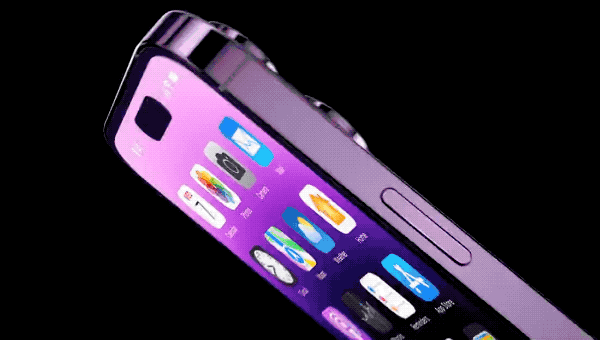iPhone 14 Pro and iPhone 14 Pro Max — reasons to buy and skip
Apple introduces plenty of changes to its Pro phone — is it enough to upgrade?

Both the iPhone 14 Pro and iPhone 14 Pro Max look to be the standout releases from September's Apple event, with features and improvements that put them leagues ahead of Apple's other phones. Our iPhone 14 vs. iPhone 14 Pro comparison offers a full breakdown, but suffice it to say, if it's major changes you're looking for, seek out the Pro models.
But does that mean either the iPhone 14 Pro or iPhone 14 Pro Max should be your next phone? With iPhone 14 preorders underway, that's certainly a pressing question, and not one we can fully answer until we've had a chance to test and review both devices. We do have some initial impressions, thanks to our iPhone 14 Pro Max hands-on time, though, which helps us form some arguments for and against an iPhone 14 Pro upgrade.
From a powerful new chipset to an eye-catching notch replacement, the iPhone 14 models have a lot to recommend them. But there are a few reasons you may want to hold off on upgrading from your current iPhone. Here's five reasons why you should buy the iPhone 14 Pro or iPhone 14 Pro Max and two reasons why you can skip either device.
Why you should buy the iPhone 14 Pro and iPhone 14 Pro Max
Big camera improvements
For years, "12" has been the magic number for iPhone cameras, as in 12MP. That's been the megapixel rating on every rear camera in use on the iPhone, from the main shooter to the ultrawide and telephoto lenses.
The iPhone 14 Pro takes things in a different direction. Apple's Pro models now feature a 48MP main camera, allowing you to combine four pixels into a single one to produce brighter, more detailed shots. The ProRAW mode on the phones can capture uncompressed 48MP images that give you greater editing flexibility. And there's even a 2x zoom mode utilizing the main camera.

The ultrawide and telephoto lenses get improvements of their own, with the former now featuring larger pixels that let in more light and improve the macro camera mode. Meanwhile, the telephoto lens on the iPhone 14 Pro models now supports a 6x digital zoom on top of the 3x optical zoom before. Even the front TrueDepth camera enjoys a wider aperture for improved low-light photos and built-in autofocus.
Low-light photography seems to be a major focus for Apple with the iPhone 14 series, as the phones' new Photonic Engine aims to improve mid- to low-light photography on all of three rear cameras — anywhere rom a 2x improvement to a 3x improvement depending on the lens. And Apple adds to the iPhone's video-capture bag of tricks with a new Action Mode designed to shoot more stable video even when you're moving at high speeds.
Get instant access to breaking news, the hottest reviews, great deals and helpful tips.
Apple typically dominates the best camera phone rankings, and based on what we've seen so far with the iPhone 14 Pro cameras, that's not going to change any time soon.
A faster A16 Bionic chipset
While the iPhone 14 and iPhone 14 Plus make do with a more advanced version of the same A15 Bionic chipset found in last year's iPhone 13, the Pro models get an upgrade to all new Apple silicon. The A16 Bionic inside the iPhone 14 Pro and iPhone 14 Pro Max is built on a 4-nanometer process, unlike the 5nm A15, so Apple is predicting a big boost to power efficiency. In fact, the A16 should consume about 20% less power than its predecessor.

The pace-setting performance that iPhone users enjoy is all but certain to continue here. While we have yet to benchmark the iPhone 14 Pro, Apple tells us that the A16 Bionic's 6-core CPU is 40% faster than comparable chipsets from rival chip makers. (That's Qualcomm, and its Snapdragon 8 Gen 1, in case you can't read between the lines.) The GPU and Neural Engines see improvements as well.
The bottom line is that you should be able to throw a lot at the A16 processor, and your iPhone 14 Pro will hum right along.
Dynamic Island impresses
Anyone could have replaced the iPhone's notch with camera cutouts — just look at all those Android phones. Apple went its own route with a pill-style shape to house the improved front camera and sensors needed for Face ID to securely unlock your phone.

But there's more to this area than just a cutout for cameras and sensors — so much so that Apple gave it a name. The Dynamic Island feature on the iPhone 14 Pro and iPhone 14 Pro Max delivers a whole bunch of alerts and notifications, seemingly expanding and contracting on an as-needed basis.
Play a song, and album art with track info appears in Dynamic Island; you can long-press on that to get more information. The space is big enough to hold two sets of info — a countdown timer, for example, and a notification that your AirPods are connected. Apple says it's working with developers so that they take advantage of the notification capabilities for the Dynamic Island, too, meaning this feature's usefulness should expand over time.
Always-on display
Displays with adaptive refresh rates are still limited to the Pro phones with the iPhone 14 lineup — bad news if you want the cheaper iPhone 14 or iPhone 14 Plus, but no concern if you're in the market for a higher-end iPhone. The iPhone 14 Pro and iPhone 14 Pro Max even take things on step farther by improving the ProMotion display's refresh rate, allowing it to scale down to 1Hz when the on-screen activity is static.

That change opens the door to a new-to-the-iPhone feature — an always-on display. The date and time on your iPhone 14 Pro's lock screen will always be there, as will the widgets you can add thanks to the lock screen customization features added via iOS 16. Even the lock screen wallpaper remains visible, though dimmed so that it won't drain your phones battery. (Our battery life testing will tell the tale there.)
Android phones have offered always-on displays for a while, but from what we've seen so far with that feature's implementation on the iPhone 14 Pro, it's worth the wait.
No price hike
If you followed iPhone 14 rumors leading up to the launch of the new phones, you came to expect that Apple was going to hike the prices on its Pro models. Well-connected analysts were reporting a $100 price hike for each phone, which would have pushed the iPhone 14 Pro Max in particular into Galaxy S22 Ultra pricing territory.
The expected price hikes never materialized, though. The iPhone 14 Pro costs $999, while the iPhone 14 Pro Max costs $1,099 — the same prices that the comparable iPhone 13 Pro models featured. Those aren't cheap prices by any stretch of the imagination, but they're in line with what you'd expect to pay for a Pro-level phone. More importantly, they don't push either the iPhone 14 Pro or iPhone 14 Pro Max out of reach for more would-be owners, and iPhone 14 deals can lower the cost even further.
Why you should skip the iPhone 14 Pro and iPhone 14 Pro Max
Skimpy storage
"Pro" is right there in the name of Apple's priciest phones. So why does the company insist on saddling the base models of the iPhone 14 Pro and iPhone 14 Pro Max with 128GB of storage, the same kind of capacity you can find on much cheaper handsets?

Limited storage space is especially concerning with the iPhone lineup. iPhones have never offered a microSD card slot for add-on storage, and the iPhone 14 series isn't changing that, so the storage you get at the time of purchase is the story you'll have for your remaining time with that iPhone. That means committing to a life with 128GB of storage on hand — actually, less, since the preinstalled software takes up some space — or paying up to get a 256GB, 512GB or 1TB model instead.
Those storage upgrades aren't cheap either, with the 256GB iPhone 14 Pro costing an additional $100 over the regular iPhone 14 Pro price. The 512GB and 1TB raise the price by $300 and $500, respectively.
One could argue that Samsung's flagships have similar limitations on storage space — well, not the Galaxy Z Fold 4 with its 256GB base model — but that's all the more reason for Apple to start giving iPhone Pro owners Pro amounts of storage.
No change to charging speeds
Sometimes, phone rumors don't pan out, and it's good news — see that uproar over the price hike that wasn't that we mentioned above. But other times, a rumor comes along that we really hope turns out to be true only to wind up disappointed. And that's the case with iPhone 14 Pro charging.

Before the iPhone 14 launch, some rumors tipped the Pro models to get 30W wired charging, an improvement over the 20W charging that Apple's phones currently support. The boost would have helped iPhones keep pace with other devices that top off their battery much faster. The Galaxy S22 features 25W wired charging, while the Pixel 6 Pro offers 23W. The OnePlus 10 Pro tops out at 65W charging for U.S. users and 80W in other parts of the world. All three of these devices cost less than the iPhone 14 Pro.
It's not that the iPhone 14 Pro takes forever to charge. You can get a drained phone to a respectable 50% level after 30 minutes. But that's not the fastest charging speed around, and it's not like Apple to settle for second best.
iPhone 14 Pro and iPhone 14 Pro Outlook
Our perspective on the new iPhone 14 Pro models may shift once we get a chance to put the two new Pro versions through their paces. On paper, the iPhone 14 Pro and iPhone 14 Pro Max promise big improvements over their predecessors, and that's before we discuss new features like crash detection and satellite connectivity for emergency messaging. These are two very powerful handsets that will put a lot of capabilities at your fingertips if you can swing the $999-and-up price tag.
If you've got an iPhone 14 Pro Max, then check out our round up of the best iPhone 14 Pro Max cases.
Philip Michaels is a Managing Editor at Tom's Guide. He's been covering personal technology since 1999 and was in the building when Steve Jobs showed off the iPhone for the first time. He's been evaluating smartphones since that first iPhone debuted in 2007, and he's been following phone carriers and smartphone plans since 2015. He has strong opinions about Apple, the Oakland Athletics, old movies and proper butchery techniques. Follow him at @PhilipMichaels.

